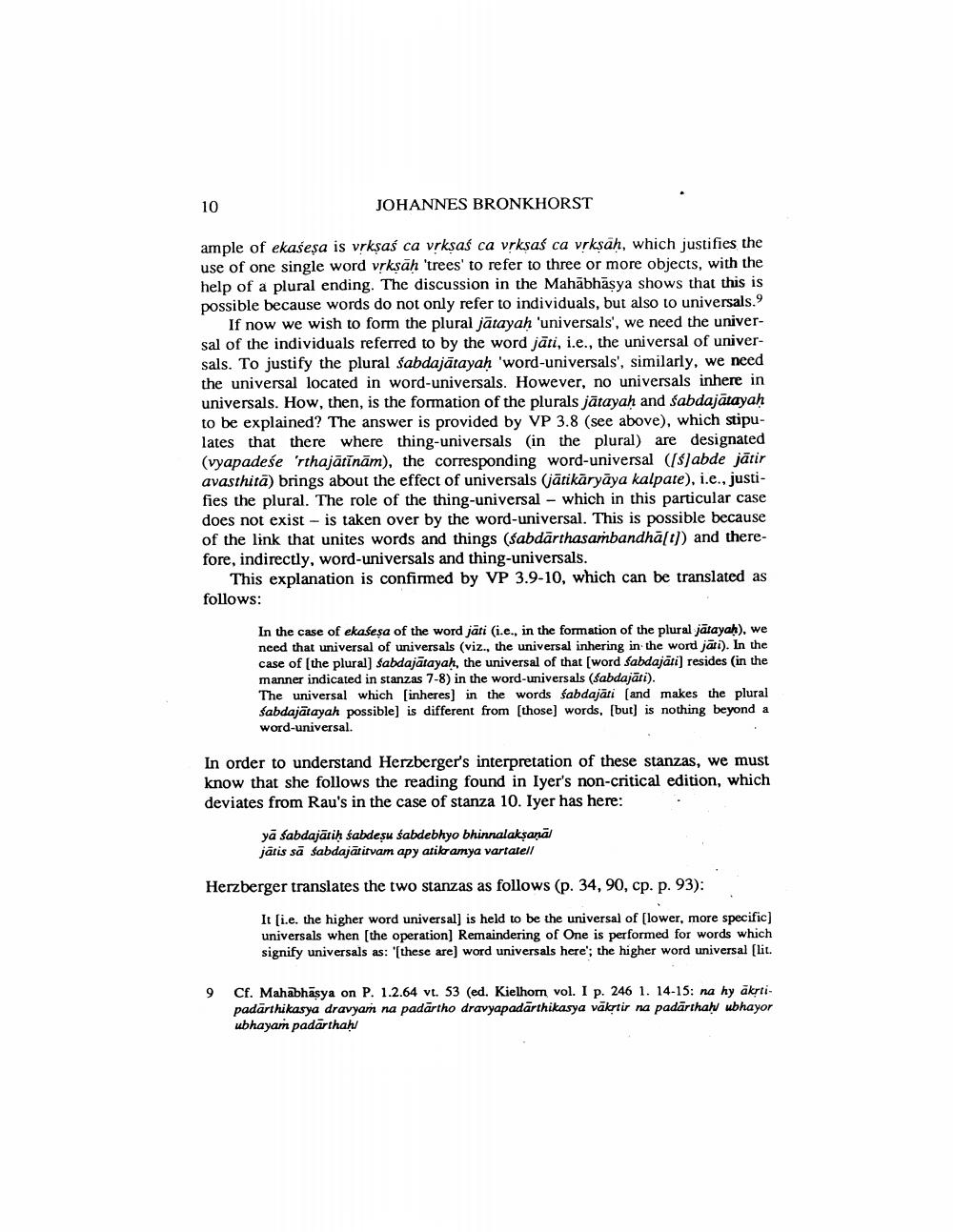Book Title: Studies On Bhartrhari 3 Author(s): Johannes Bronkhorst Publisher: Johannes Bronkhorst View full book textPage 6
________________ 10 JOHANNES BRONKHORST ample of ekašeşa is vrkşas ca vrksaś ca vrksas ca vrkșah, which justifies the use of one single word vrksah 'trees' to refer to three or more objects, with the help of a plural ending. The discussion in the Mahābhāsya shows that this is possible because words do not only refer to individuals, but also to universals. If now we wish to form the plural jātayah 'universals', we need the universal of the individuals referred to by the word jāti, i.e., the universal of universals. To justify the plural sabdajātayah 'word-universals', similarly, we need the universal located in word-universals. However, no universals inhere in universals. How, then, is the formation of the plurals jätayah and Sabdajātayah to be explained? The answer is provided by VP 3.8 (see above), which stipulates that there where thing-universals (in the plural) are designated (vyapadese 'rthajātinām), the corresponding word-universal ([s] abde jātir avasthitā) brings about the effect of universals (jātikāryāya kalpate), i.e., justifies the plural. The role of the thing-universal - which in this particular case does not exist - is taken over by the word-universal. This is possible because of the link that unites words and things (sabdārthasambandhält)) and therefore, indirectly, word-universals and thing-universals. This explanation is confirmed by VP 3.9-10, which can be translated as follows: In the case of ekaśeşa of the word jäti (i.e., in the formation of the plural jātayah), we need that universal of universals (viz., the universal inhering in the word jäti). In the case of the plural) sabdajātayah, the universal of that (word sabdajāti) resides in the manner indicated in stanzas 7-8) in the word-universals (Sabdajāti). The universal which [inheres] in the words fabdajati (and makes the plural sabdajātayah possible] is different from those words. [but) is nothing beyond a word-universal. In order to understand Herzberger's interpretation of these stanzas, we must know that she follows the reading found in Iyer's non-critical edition, which deviates from Rau's in the case of stanza 10. Iyer has here: ya sabdajātiḥ śabdesu sabdebhyo bhinnalaksaņā jätis sā sabdajātitvam apy atikramya vartalell Herzberger translates the two stanzas as follows (p. 34, 90, cp. p. 93): It i.e. the higher word universal] is held to be the universal of flower, more specific) universals when the operation) Remaindering of One is performed for words which signify universals as: '(these are] word universals here'; the higher word universal (lit. Cf. Mahabhasya on P. 1.2.64 vt. 53 (ed. Kielhom vol. I p. 246 1. 14-15: na hy akrti. padārthikasya dravya na padārtho dravyapadārthikasya vākrtir na padārthah ubhayor ubhayam padārthaḥPage Navigation
1 ... 4 5 6 7 8 9 10 11 12 13 14
